A COMPLETE FRENCH GRAMMAR FOR
REFERENCE AND PRACTICE
Trudie Maria Booth
University Press of America, Inc.
Lanham Boulder New York Toronto Plymouth, UK
Copyright 2010 by
University Press of America, Inc.
4501 Forbes Boulevard
Suite 200
Lanham, Maryland 20706
UPA Acquisitions Department (301) 459-3366
Estover Road
Plymouth PL6 7PY
United Kingdom
All rights reserved
Printed in the United States of America
British Library Cataloging in Publication Information Available
Library of Congress Control Number: 2009939712
ISBN: 978-0-7618-4971-1 (paperback: alk. paper)
eISBN: 978-0-7618-4972-8
 The paper used in this publication meets the minimum
The paper used in this publication meets the minimum
requirements of American National Standard for Information
SciencesPermanence of Paper for Printed Library Materials,
ANSI Z39.48-1992
Contents (Table des Matires)
Acknowledgements
I would like to express my sincere gratitude and appreciation to all who have supported me throughout the preparation of this book, especially the following:
My friends and colleagues Sylvain Avenel and Brice Montaner for their valuable comments and suggestions, the author and linguist Nicole Valle for her marvelous contributions, the tireless proofreaders Danielle Jolicoeur, Emily Mannix, Margaret Hardy, Katherine Braun and Joseph Horlacher, my daughter Andrea for the wonderful advice she sent to me from her home in France, Brian Cotlove who assisted me with his technological expertise, and all my enthusiastic students whose excellent questions and (yes!) mistakes, contributed to the content of this grammar book.
I am especially grateful to Samantha Kirk, acquisitions editor at University Press of America, who never got tired of my e-mails and offered help whenever I needed assistance in a prompt and exceptionally efficient manner. Thank you so much, Samantha! It was a pleasure to work with you on this project.
Preface
As the title indicates, A Complete French Grammar for Reference and Practice is a comprehensive grammar with readings and exercises which allow learners to practice newly acquired knowledge and thereby refine their writing, reading and speaking skills.
Since this manual describes every aspect of French grammar more thoroughly than most other grammar books, it is of considerable length. This book first reviews the basic grammar concepts and then clearly explains the more complicated structures of the language of Molire. It can be used as a classroom text at the intermediate and advanced levels, as well as for self-study and reference. The text is intended to be a reliable source of information and a workbook for all those Anglophone students who want to speak and write French correctly.
In order to facilitate comprehension, explanations are given in English and all example sentences are translated into English as well. In addition, grammatical terminology is clearly defined so that the student will not have to guess the meaning of terms such as relative pronouns, direct and indirect objects or pronominal verbs.
Useful current words and expressions as well as cultural information about France are incorporated in the examples and exercises in order to increase the students cultural competence and to give them the opportunity to enrich their vocabulary while at the same time learning new grammatical concepts. The numerous oral and written exercises include translations, suggestions for communicative activities with a partner, as well as topics for written compositions. Since there is a wide variety of exercises, teachers and students will be able to choose what best corresponds to their needs.
Typical errors made by Anglophone speakers due to the influence of English (such as je cherche pour mon stylo, je tlphone ma mre, jentre la chambre, or je te veux venir) are pointed out throughout the book and, the goal being accuracy, many opportunities are given to eliminate these common mistakes.
At the end of most of the chapters, sections entitled Translation Difficulties deal with expressions and structures that cannot be translated literally from English into French, and indicate their idiomatic French equivalents. Whenever appropriate, poems and other authentic French texts (such as a fairy tale and an excerpt from Le Petit Nicolas) illustrate the grammar aspects discussed in a given chapter. And when it is helpful, phonetic transcriptions (using the symbols of the International Phonetic Association) show the correct pronunciation of difficult words.
A Complete French Grammar for Reference and Practice is divided into 30 chapters. The first chapter is devoted to numbers and presents clock time, dates and related items. In my intermediate and advanced French classes, I always review numerals first, in order to give the students confidence (since they are familiar with this material already), and also to reinforce their knowledge of numerals, as well as help them avoid common mistakes such as sur lundi or le troisime de mai. The second chapter deals with the present indicative (forms and use) of regular and irregular verbs, gives lists of common idiomatic expressions and treats problem verbs, i.e., those English verbs which have several equivalents in French that cannot be used interchangeably (e.g. to spend = passer and dpenser; to leave = partir, quitter, laisser). on personal pronouns. The remaining chapters deal with nouns and problem nouns, the present participle, the passive voice, indirect speech, and all other aspects of French grammar, such as articles, adjectives and adverbs, possessives and demonstratives, negative expressions, prepositions, conjunctions, the infinitive, etc. The last chapter is devoted to false cognates (also called faux amis or false friends), i.e., to those French words which have a similar spelling as English words but not the same meaning (e.g. la librairie = the bookstore, NOT the library). This will remind the reader that attendre does not mean to attend, and that actuellement does not translate actually. An English-French and French-English glossary is provided, in which the student can look up unfamiliar words without having to consult a dictionary. Finally, there is a user-friendly detailed index that will allow learners to rapidly find the information they are looking for. An answer key is available through the author.
It is hoped that this grammar book will be a useful reference and practice tool for students and teachers alike, and that it will help learners acquire proficiency in oral and written French. Grammar does not have to be boring. Studying it can be fun and will be particularly rewarding when it leads to an accurate usage of the language, to successful communication without misunderstandings, and to encouraging compliments by native French speakers.
Abbreviations used in this book are
adj. | adjective |
adv. | adverb |
e.g. | for example |
fam. | familiar, informal language |
fam. (in exercises) | familiar: use tu to translate you |
f. | feminine |
fem. | feminine |
fig. | figurative sense |
i.e. | that is, that is to say |
indic. | indicative |
inf. | infinitive |
jur. | in a legal context |
Next page

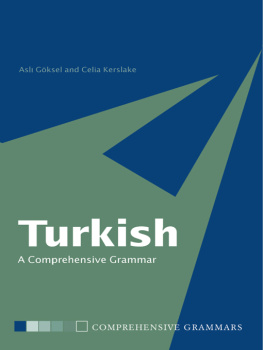
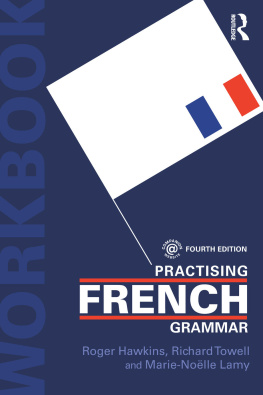
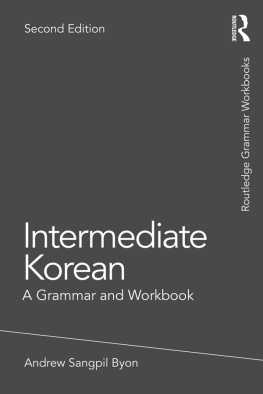

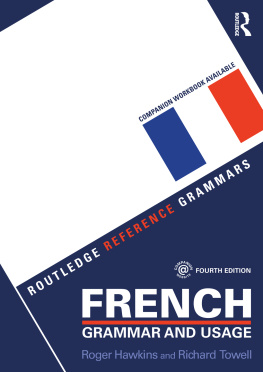
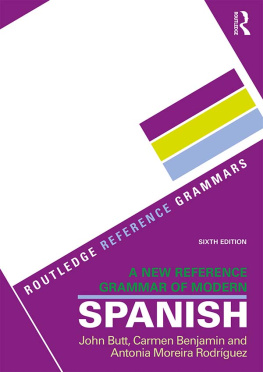
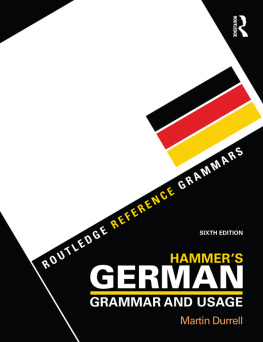
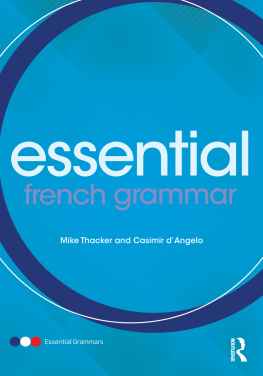

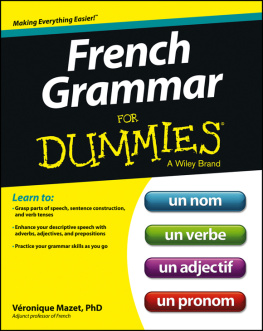
 The paper used in this publication meets the minimum
The paper used in this publication meets the minimum